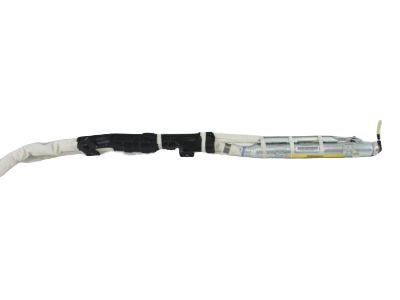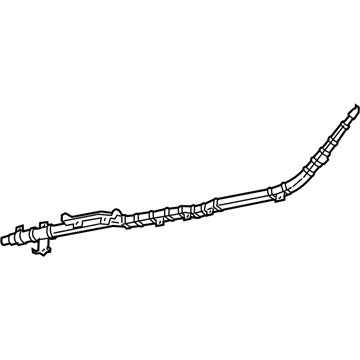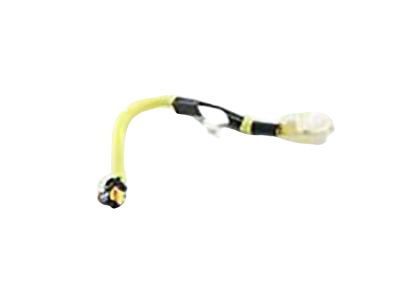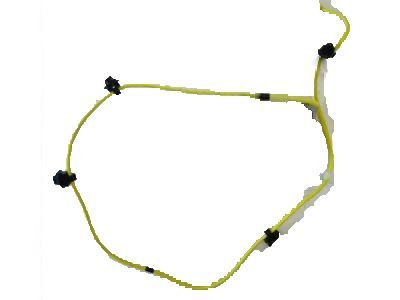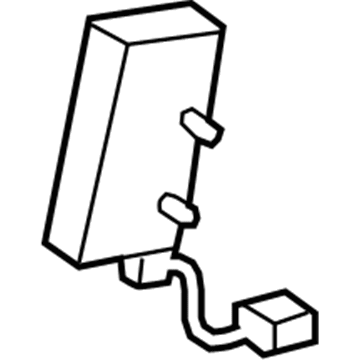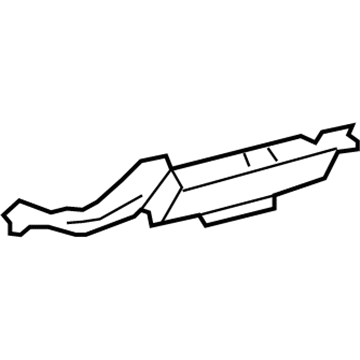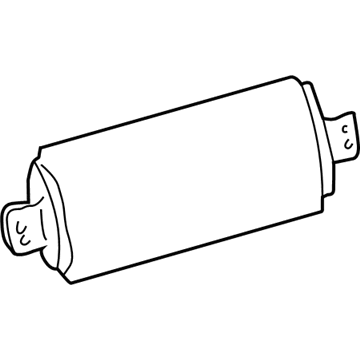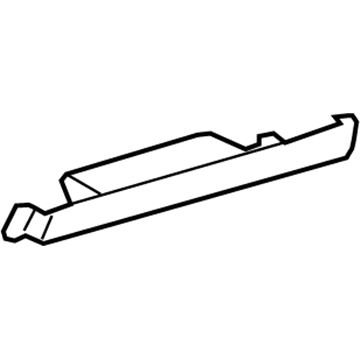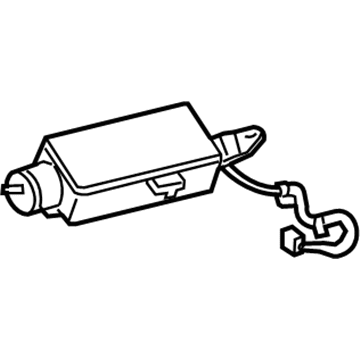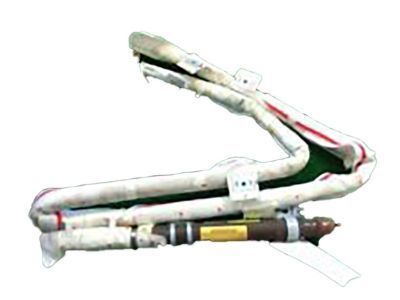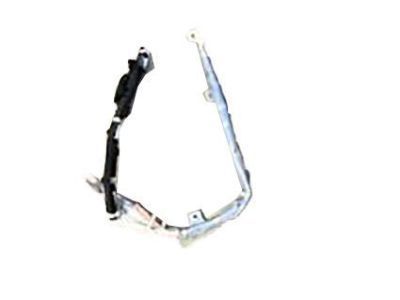×
ToyotaParts- Hello
- Login or Register
- Quick Links
- Live Chat
- Track Order
- Parts Availability
- RMA
- Help Center
- Contact Us
- Shop for
- Toyota Parts
- Scion Parts
My Garage
My Account
Cart
OEM Toyota 4Runner Air Bag
Air Bag Module- Select Vehicle by Model
- Select Vehicle by VIN
Select Vehicle by Model
orMake
Model
Year
Select Vehicle by VIN
For the most accurate results, select vehicle by your VIN (Vehicle Identification Number).
24 Air Bags found

Toyota 4Runner Inflator Curtain, Passenger Side
Part Number: 62170-35020$1325.56 MSRP: $1942.62You Save: $617.06 (32%)Ships in 1-3 Business Days
Toyota 4Runner Inflator Curtain, Passenger Side
Part Number: 62170-35070$1111.61 MSRP: $1629.08You Save: $517.47 (32%)Ships in 1-3 Business Days
Toyota 4Runner Side Impact Inflator Module, Passenger Side
Part Number: 73910-35010$382.60 MSRP: $560.70You Save: $178.10 (32%)Ships in 1-3 Business DaysToyota 4Runner Knee Inflator Module, Gray, Lower Passenger Side
Part Number: 73990-60090-B0$884.72 MSRP: $1296.57You Save: $411.85 (32%)Ships in 1-3 Business DaysToyota 4Runner Inflator Curtain, Driver Side
Part Number: 62180-35011$1322.58 MSRP: $1938.25You Save: $615.67 (32%)Ships in 1-3 Business DaysToyota 4Runner Passenger Air Bag
Part Number: 73960-0W090$677.80 MSRP: $993.32You Save: $315.52 (32%)Ships in 1-3 Business DaysToyota 4Runner Knee Inflator Module, Beige, Lower Driver Side
Part Number: 73900-35030-E0$879.73 MSRP: $1289.25You Save: $409.52 (32%)Ships in 1-3 Business DaysToyota 4Runner Knee Inflator Module, Beige, Lower Passenger Side
Part Number: 73990-60090-E1$807.76 MSRP: $1183.78You Save: $376.02 (32%)Ships in 1-3 Business DaysToyota 4Runner Inflator Curtain, Passenger Side
Part Number: 62170-35050$1198.44 MSRP: $1756.32You Save: $557.88 (32%)Ships in 1-3 Business DaysToyota 4Runner Knee Inflator Module, Gray, Lower Driver Side
Part Number: 73900-35030-B0$879.73 MSRP: $1289.25You Save: $409.52 (32%)Ships in 1-3 Business DaysToyota 4Runner Passenger Air Bag
Part Number: 73960-35050$685.68 MSRP: $1004.86You Save: $319.18 (32%)Ships in 1-3 Business DaysToyota 4Runner Inflator Curtain, Driver Side
Part Number: 62180-35040$1249.74 MSRP: $1831.51You Save: $581.77 (32%)Toyota 4Runner Side Impact Inflator Module, Driver Side
Part Number: 73920-35010$382.60 MSRP: $560.70You Save: $178.10 (32%)Ships in 1-2 Business DaysToyota 4Runner Inflator Curtain, Driver Side
Part Number: 62180-35050$1249.74 MSRP: $1831.51You Save: $581.77 (32%)Ships in 1-3 Business DaysToyota 4Runner Inflator Curtain, Driver Side
Part Number: 62180-35060$1111.61 MSRP: $1629.08You Save: $517.47 (32%)Ships in 1-3 Business DaysToyota 4Runner Inflator Curtain, Passenger Side
Part Number: 62170-35040$1198.44 MSRP: $1756.32You Save: $557.88 (32%)Ships in 1-3 Business Days
| Page 1 of 2 |Next >
1-20 of 24 Results
Toyota 4Runner Air Bag
Choose genuine Air Bag that pass strict quality control tests. You can trust the top quality and lasting durability. Shopping for OEM Air Bag for your Toyota 4Runner? Our website is your one-stop destination. We stock an extensive selection of genuine Toyota 4Runner parts. The price is affordable so you can save more. It only takes minutes to browse and find the exact fit. Easily add to cart and check out fast. Our hassle-free return policy will keep you stress-free. We process orders quickly for swift delivery. Your parts will arrive faster, so you can get back on the road sooner.
Toyota 4Runner Air Bag Parts and Q&A
- Q: What are the essential precautions and procedures for handling Air Bag systems on Toyota 4Runner?A:All SRS components of this vehicle include driver and front passenger Air Bags together with side Air Bags curtain shield Air Bags and front Seat Belt pretensioners. Begin any operation only when waiting at least 90 seconds after switching to "LOCK" position and battery terminal cable removal. All SRS components should remain free from exposure to either hot air or fire contact. A procposal with minimum impedance of 10 kOhms/V should be used during diagnostics with a required step to verify DTC-readings before discharging the battery power. Battery power loss triggers memory reset during the disconnection process. All SRS components need to be inspected regardless of Air Bag deployment status when the vehicle experienced a minor collision. The use of SRS parts from other vehicles remains prohibited since manufacturers recommend new part installation with a strict order to avoid altering factors involving Steering Pad, Front Passenger Air Bag Assembly, Front Seat Side Air Bag Assembly, Curtain Shield Air Bag Assembly, Center Air Bag Sensor Assembly, Front Air Bag Sensor, Front Seat Inner Belt Assembly, Seat Position Sensor, Occupant Classification ECU, Side Air Bag Sensor, Rear Air Bag Sensor, or Front Seat Outer Belt Assembly. Before repairing side Air Bag-equipped doors or installing new sensors it is necessary to wait 90 seconds after terminating the negative cable connection. All operations on Air Bag sensors should follow procedures that prevent both dropping and disassembly. After an accident occurs it is necessary to check SRS warning lights followed by Air Bag sensor replacement if Air Bags deployed during the collision. The yellow-colored SRS connectors use security mechanisms to maintain stable connections while also guarding against mechanical disconnections. Safely position the connectors by pushing the lock button then raising the connector until completion of hook and locking sleeve procedures for steering pad, curtain shield Air Bag assembly and front seat outer belt assembly. Users need to move the slider on both the front passenger Air Bag assembly and front seat side Air Bag assembly before unconnection can commence. Ensure lock buttons properly receive the button for connections while addressing connecting procedures for front Air Bag sensors, side Air Bag sensors and rear Air Bag sensors by using outer connector locking sleeves to achieve secure connections during removal and reinstallation.
- Q: What are the inspection and repair procedures for Air Bag systems after a collision on Toyota 4Runner?A:A post-collision inspection with possible fixations must be done to the Air Bag system. Carrying out diagnostic checks and visual inspections of front passenger Air Bags should be performed on both collision and non-collision vehicles. A diagnostic system check must precede visual checks on the Air Bag assembly and wire harnesses along with connectors and instrument panel and reinforcement as well as the need to replace any deformed or cracked components instead of making repairs. Perform a diagnostic check again if the Air Bag deployed then inspect the instrument panel together with the wire harness to detect any damage. The replacement of the front passenger Air Bag assembly is required after discovering any detected faults. The inspection method for the steering wheel pad and spiral cable parallels the others in which you should check for damage and confirm the steering wheel pad has the correct distance from the wheel. When needed you must replace either the steering wheel pad or steering wheel or spiral cable. Serious examination of the SRS wire harness within the cowl wire harness assembly should occur to detect breakage or damaged connectors as necesary replacements will follow. The replacement of the Air Bag Sensor assembly becomes necessary in situations where deployment has occurred or if it proves faulty or if it drops. Carry out diagnostic tests on the front Air Bag sensor while inspecting it for damages before conducting replacements when required. When working with these components follow correct safety procedures and adhere to specification requirements during removal and installation steps.
